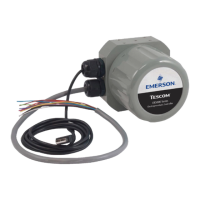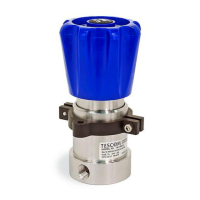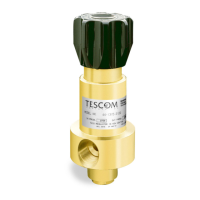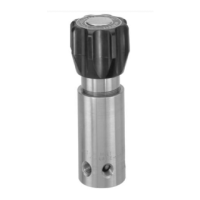ER5000 —
150
The ERTune™ Program: Basic Features
The Derivative Controller
This slider sets the Derivative term for the ER5000.
Derivative Tuning Tips
• In most tuning applications, the Derivative term is rst zeroed
out so the effect of adjustments to the Proportional term is
not damped. It is then added gradually.
• In most tuning applications, the Derivative term will fall in the
range of 25–250.
• The Derivative term should be increased to reduce instability,
such as overshoot or ringing and to decrease settling time.
• If increasing Derivative term slows down rise time without
diminishing overshoot/ringing, the Proportional term should
be decreased instead.
• Paradoxically, higher Derivative settings can make some
systems unstable by increasing sensitivity to transient changes
(noise) in the operating environment. If you note that the
controller is not remaining in Stable State after setpoint has
been reached, try reducing the Derivative term.
The Integral Controller
This slider sets the Integral term for the ER5000.
Integral Tuning Tips
• In most tuning applications, the Integral term is rst zeroed
out so the effect of adjustments to the Proportional term is
not amplied. It is then added gradually.
• In most tuning applications, the Integral term will fall in the
range of 50–800.
• PID parameters tend to be logarithmic. This means that small
changes in the slider setting usually result in no appreciable
change to the response curve. A set of values such as 100,
200, 400, 800, will allow you to quickly nd the applicable
range for your Integral term. You can ne tune from there.
• The Integral Limits Controllers allow you to set a higher
Integral term, then limit undesired effects using these
additional controls. This allows you to accelerate the response
while minimizing unwanted side effects.

